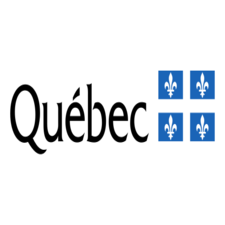Agglomération
Type of resources
Available actions
Keywords
Contact for the resource
Provided by
Years
Representation types
Update frequencies
status
Service types
Scale
-

The layers of administrative divisions offered at the scales of 1/20,000 and 1/100,000 allow the location of boundaries for the following components: * Boroughs and agglomerations; * Municipalities, unorganized territories and indigenous territories; * Administrative regions, metropolitan communities, and MRCs; * The international border, the interprovincial borders as well as the Québec—Newfoundland and Labrador border. For the 1/100,000 scale version, the cut-off data originally compiled at the scale of 1/20,000 is adjusted to the corresponding planimetric components at the scale of 1/100,000.**This third party metadata element was translated using an automated translation tool (Amazon Translate).**
-

The land use and development plan puts forward a frame of reference aimed at better knowing, protecting and promoting heritage. The data available in this set mainly comes from the mapping in section 2.3 of the Land Use and Development Plan of the Agglomération de Montréal, i.e. the __built or archaeological heritage__, the __emblematic and identity landscapes__, as well as the __views of interest__. This urban planning and development plan for the agglomeration of Montreal outlines the main parameters that will guide the Montreal agglomeration council in decisions relating to land use planning in the coming years. From a perspective of sustainable development, this document guides decisions that shape the territory in order to promote compact and greener neighborhoods, increase public and active transportation, support the economic dynamism of the agglomeration and highlight areas of interest. Consult the [interactive map] (https://montreal.ca/services/cartes-interactives-amenagement-du-territoire) of the Planning and Development Plan to visualize the thematic data.**This third party metadata element was translated using an automated translation tool (Amazon Translate).**
-

Land use and occupancy density reflect, at the normative level, the main directions of land use planning in the agglomeration of Montreal. The data available in this set mainly comes from the mapping in Chapter 3 of the Land Use Plan and Development Plan for the Agglomération de Montréal, i.e. __land usage__ and __occupancy density__. This urban planning and development plan for the agglomeration of Montreal outlines the main parameters that will guide the Montreal agglomeration council in decisions relating to land use planning in the coming years. From a perspective of sustainable development, this document guides decisions that shape the territory in order to promote compact and greener neighborhoods, increase public and active transportation, support the economic dynamism of the agglomeration and highlight areas of interest. Consult the [interactive map] (https://smvt.maps.arcgis.com/apps/webappviewer/index.html?id=d152aaa85b6f4e9086cecdf10c7456db) of the Planning and Development Plan to visualize the thematic data. **This third party metadata element was translated using an automated translation tool (Amazon Translate).**
-

The consolidation and enhancement of the commercial centers indicated in __map 4 — Concentrations of commercial establishments __, as well as the commercial activity of streets, axes and shopping centers should be preferred. In addition, the economic clusters represented on __map 8 — Economic clusters of the agglomeration of Montreal__ is a particularity of the Montreal region. These clusters total important employment pools and have the potential for growth and wealth creation. The data available in this set come from sections 2.1 and 2.2 of the Land Use and Development Plan of the Agglomération de Montréal. This urban planning and development plan for the agglomeration of Montreal outlines the main parameters that will guide the Montreal agglomeration council in decisions relating to land use planning in the coming years. From a perspective of sustainable development, this document guides decisions that shape the territory in order to promote compact and greener neighborhoods, increase public and active transportation, support the economic dynamism of the agglomeration and highlight areas of interest.**This third party metadata element was translated using an automated translation tool (Amazon Translate).**
-

This data set brings together a series of data focused on the topic of transport. These data are found in various sections of the Land Use and Development Plan. The description of each of these games contains the card number to which it refers. This urban planning and development plan for the agglomeration of Montreal outlines the main parameters that will guide the Montreal agglomeration council in decisions relating to land use planning in the coming years. From a perspective of sustainable development, this document guides decisions that shape the territory in order to promote compact and greener neighborhoods, increase public and active transportation, support the economic dynamism of the agglomeration and highlight areas of interest. Consult the [interactive map] (https://smvt.maps.arcgis.com/apps/webappviewer/index.html?id=d152aaa85b6f4e9086cecdf10c7456db) of the Land Use and Development Plan to visualize some of these thematic data.**This third party metadata element was translated using an automated translation tool (Amazon Translate).**
-
Le service de cartes Web Toporama (SCW-Toporama) du Secteur des sciences de la Terre (SST) de Ressources naturelles Canada (RNCan) est un service Internet qui s'adresse principalement aux usagers et développeurs d'applications cartographiques en ligne. Ce service est compatible avec les normes et spécifications du service de cartes Web, version 1.1.1., de l'OpenGIS® Consortium (OGC) (http://www.opengeospatial.org/). L'accès au SCW-Toporama est sans frais et sans restrictions selon les termes de la Licence du gouvernement ouvert - Canada (http://ouvert.canada.ca/fr/licence-du-gouvernement-ouvert-canada). L'utilisation de ce service permet de construire une carte personnalisée qui utilise les meilleures données de base du SST pour une échelle donnée. Ces données sont réputées pour être précises et à jour. Elles sont regroupées sous 15 thèmes d'informations construits, selon l'échelle, à partir de CanVec 1/50 000, de la Base nationale de données topographiques (BNDT) 1/250 000 ou des données de base de l'Atlas du Canada.
-
Le service de cartes Web Toporama (SCW-Toporama) du Secteur des sciences de la Terre (SST) de Ressources naturelles Canada (RNCan) est un service Internet qui s'adresse principalement aux usagers et développeurs d'applications cartographiques en ligne. Ce service est compatible avec les normes et spécifications du service de cartes Web, version 1.1.1., de l'OpenGIS® Consortium (OGC) (http://www.opengeospatial.org/). L'accès au SCW-Toporama est sans frais et sans restrictions selon les termes de la licence (http://www.geogratis.ca/geogratis/fr/licence.jsp). Une inscription au service est optionnelle, mais fortement recommandée afin de mieux connaître les usagers, de les tenir informés et d'améliorer le service. Le formulaire d'inscription est disponible sur le site Web de GéoGratis (http://www.geogratis.ca/) sous la rubrique Inscription à la liste des utilisateurs. L'utilisation de ce service permet de construire une carte personnalisée qui utilise les meilleures données de base du SST pour une échelle donnée. Ces données sont réputées pour être précises et à jour. Elles sont regroupées sous 15 thèmes d'informations construits, selon l'échelle, à partir de CanVec 1/50 000, de la Base nationale de données topographiques (BNDT) 1/250 000 ou des données de base de l'Atlas du Canada.
-
*** WARNING/ATTENTION: This service will close soon. Please consult -What s New- section at http://geogratis.gc.ca/. ATTENTION: Ce service WMS sera fermé prochainement. Consultez la section -Quoi de neuf- sur http://geogratis.gc.ca/.*** The Toporama Web Map Service (Toporama WMS) of the Earth Sciences Sector (ESS) at Natural Resources Canada (NRCan) is an Internet service that is intended mainly for online map application users and developers. This service is compatible with OpenGIS® Consortium (OGC) (http://www.opengeospatial.org/) Web Map Service standards and specifications, version 1.1.1. Toporama WMS can be accessed at no cost and without restrictions according to the terms of the Open Government Licence - Canada (http://open.canada.ca/en/open-government-licence-canada). This service can be used to build a customized map using the best baseline data from the ESS for a given scale. These data are known for being accurate and up-to-date. They are grouped together under 15 information themes developed, depending on the scale, using CanVec 1:50,000, the National Topographic Data Base (NTDB) 1:250,000 and baseline data from the Atlas of Canada. / Le service de cartes Web Toporama (SCW-Toporama) du Secteur des sciences de la Terre (SST) de Ressources naturelles Canada (RNCan) est un service Internet qui s'adresse principalement aux usagers et développeurs d'applications cartographiques en ligne. Ce service est compatible avec les normes et spécifications du service de cartes Web, version 1.1.1., de l'OpenGIS® Consortium (OGC) (http://www.opengeospatial.org/). L'accès au SCW-Toporama est sans frais et sans restrictions selon les termes de la Licence du gouvernement ouvert - Canada (http://ouvert.canada.ca/fr/licence-du-gouvernement-ouvert-canada). L'utilisation de ce service permet de construire une carte personnalisée qui utilise les meilleures données de base du SST pour une échelle donnée. Ces données sont réputées pour être précises et à jour. Elles sont regroupées sous 15 thèmes d'informations construits, selon l'échelle, à partir de CanVec 1/50 000, de la Base nationale de données topographiques (BNDT) 1/250 000 ou des données de base de l'Atlas du Canada.
-

This collection is a legacy product that is no longer supported. It may not meet current government standards. The North American Atlas data are standardized geospatial data sets at 1:10,000,000 scale. A variety of basic data layers (e.g. roads, railroads, populated places, political boundaries, hydrography, bathymetry, sea ice and glaciers) have been integrated so that their relative positions are correct. This collection of data sets forms a base with which other North American thematic data may be integrated. The North American Atlas data are intended for geographic display and analysis at the national and continental level. Any data outside of Canada, Mexico, and the United States of America included in the North American Atlas data sets is strictly to complete the context of the data.
 Arctic SDI catalogue
Arctic SDI catalogue